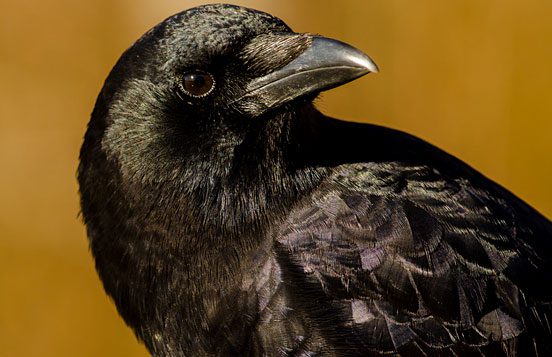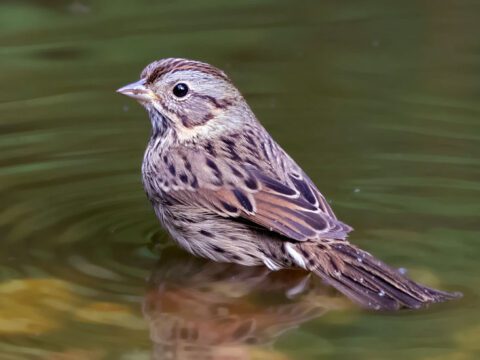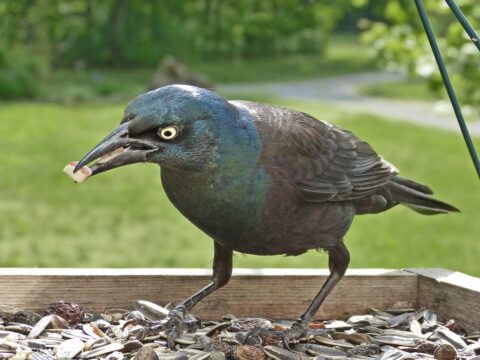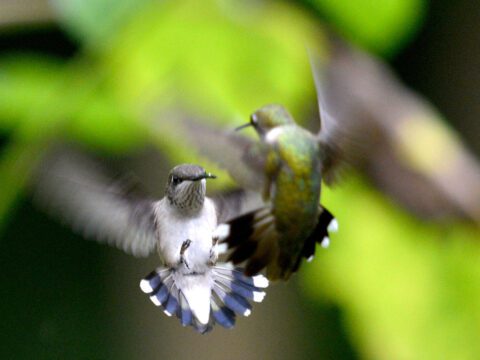Counting Crows: The Impact of the West Nile Virus
By Hugh Powell
October 15, 2010
Eleven years after West Nile virus invaded North America, it has become a case study for scientists, one that can reveal details of how fast-spreading diseases can become runaway problems—or fade out peacefully.
In a new analysis of the virus’s effects on American Crows, Cornell Lab researchers learned that West Nile virus became less virulent as it raced westward across North America. They also found that crows in diverse habitats were less likely to come down with the disease than crows in species-poor areas. Their work was published in August in Oecologia.
Both those findings are related to how the disease spreads. West Nile virus can infect many species, from birds to horses to humans, though its virulence differs among hosts. (About one-fifth of people exposed to West Nile virus get flu-like symptoms; about one percent become seriously ill, according to the Centers for Disease Control.) The virus moves among hosts via the bite of a mosquito.
West Nile virus hit American Crows particularly hard. When the disease first appeared in New York City, in summer 1999, nearly 5,500 crows died in 4 months. Tests suggested the disease was 100-percent fatal to crows. Many other species, from jays and magpies to gulls and chickadees, also proved susceptible. Millions of birds died as West Nile swept across the continent in just five years.
Despite this overall susceptibility, crows in species-rich areas fared better than those in species-poor areas. “That’s a finding of some environmental interest, since it implies that diverse ecosystems are better able to mitigate some pathogens’ effects on highly sensitive species,” said senior scientist Walter Koenig, who led the study.
At work is a principle known as a “dilution effect,” a sort of ecological interference pattern first noted in studies of Lyme disease. It works because viruses grow with varying ease in different hosts. In habitats with few species, once the disease gains a foothold in a susceptible species, odds are good the next individual it infects will be the same species, and equally susceptible.
In species-rich areas, that mosquito has a better chance of biting a species that’s relatively immune. “There are a lot of dead-end hosts,” said Wesley Hochachka, assistant director of the Bird Population Studies program and a study author.
That the disease tended to spare more crows as it progressed westward across the continent is an example of evolution in action, Hochachka said. Viruses that kill their hosts too quickly can thwart their own chances for survival. “There was a lot of genetic variation kicking around in this virus,” Hochachka said. “The only strains able to survive and keep marching westward were the ones that weren’t as lethal.”
The study drew data from one of the largest and longest-running citizen-science projects, the North American Breeding Bird Survey. The researchers analyzed records from 20 years along nearly 700 routes across the continent.
Breeding Bird Survey data were well suited for this study, Hochachka said. Survey locations are spread fairly evenly across the country, and the same locations get surveyed year after year during the summer. By contrast, winter counts could include migrant or dispersed birds that had faced the virus in very different locations.
Other citizen-science projects offer their own advantages. For example, Hochachka uses Project FeederWatch data to study crow populations around the greater Chicago area. The concentration of FeederWatch participants means his study can offer better resolution than Breeding Bird Survey data.
West Nile virus inspired great concern in the early 2000s as populations of many birds crashed across the continent. Now, populations of many species are leveling off or recovering (though scientists are still worried about a few, such as the Yellow-billed Magpie). As for crows, the steepest part of their decline seems to be over, allowing researchers and bird watchers alike to breathe a cautious sigh of relief.
Originally published in the Autumn 2010 issue of BirdScope.

All About Birds
is a free resource
Available for everyone,
funded by donors like you
American Kestrel by Blair Dudeck / Macaulay Library




